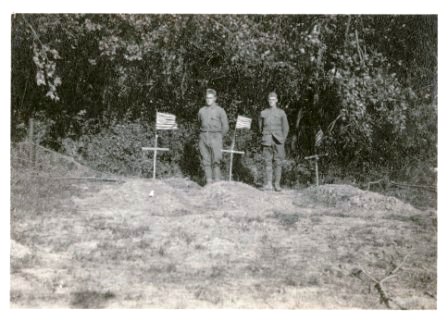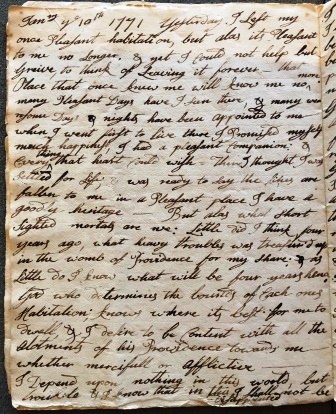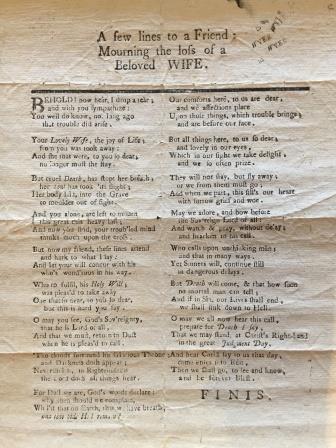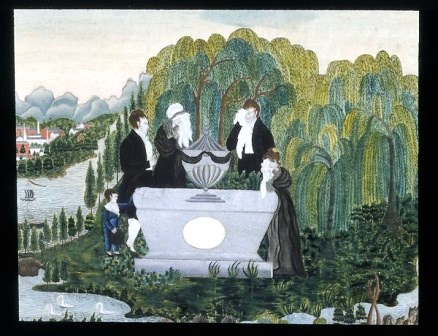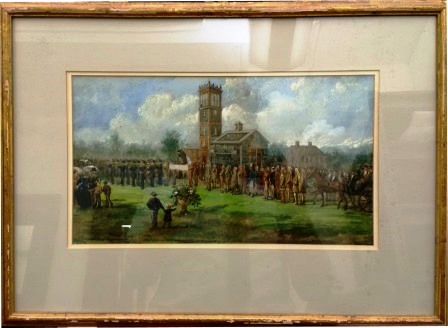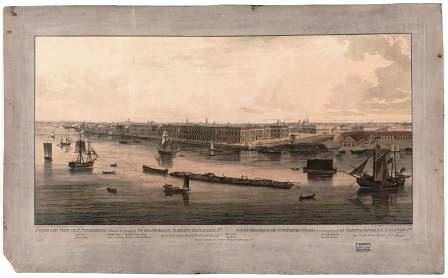By Alexis Buckley, Research
Each year the MHS grants a number of research fellowships to scholars from around the country. Our four fellowship programs bring a wide variety of researchers to the MHS. See the list of incoming 2018-2019 fellows and their project titles below. You can learn more about each fellow’s research at their MHS brown bag lunch talk—keep an eye on the calendar to find out when they’ll present!
This year we offered 23 short-term fellowships to scholars whose research brings them to the MHS, including a new fellowship for a project on American religious history, the C. Conrad and Elizabeth H. Wright Fellowship. (See page 8 of our last newsletter for details!)
We talked about our collaboration with the National Endowment for the Humanities in our last blog post. This collaboration allows us to offer long-term fellowships, where the researchers spend 4-12 months as part of the MHS community. We also partner with the Boston Athenaeum to offer a Loring fellowship for a researcher studying the Civil War, its causes and consequences. The Athenaeum’s Civil War collections are anchored by its holdings of Confederate states imprints, the largest in the nation. The Society’s manuscript holdings on the Civil War include diaries, photographs, correspondence from the battlefield and the home front, papers of political leaders, and materials on black regiments raised in Massachusetts.
The MHS is also proud to be a founding member of the New England Regional Fellowship Consortium, a collaboration of over two dozen major cultural institutions across New England. Each year, the Consortium offers fellowships to researchers whose projects bring them to NERFC member archives. This year, 11 of the 2018-2019 NERFC fellows will be researching at the MHS.
We are looking forward to welcoming all our 2018-2019 research fellows, and learning more about their work on 20th-century reform movements, 17th-century mercantilism, and all points in between!
*****
Suzanne and Caleb Loring Fellows on the Civil War, Its Origins, and Consequences
Jean Franzino
Beloit College
Dis-Union: Disability Cultures and the American Civil War
MHS Short-term Fellowships
African-American Studies Fellow
Crystal Webster
University of Massachusetts, Amherst
Beyond the Boundaries of Childhood: Nineteenth Century Black Children’s Cultural and Political Resistance
Andrew Oliver Fellow
Ann Daly
Brown University
Hard Money: The Making of a Specie Currency, 1828-1860
Andrew W. Mellon Fellows
Nicholas Ames
University of Notre Dame
Communities of Difference in 19th Century Irish-America
Caroline Culp
Stanford University
The Memory of Copley: Afterlives of the American Portrait, 1774-1920
Timothy Fosbury
University of California, Los Angeles
Persistent Archives and the Early Americas, 1600-1830
Madeline Kearin
Brown University
Sensory Experiences of Daily Life at New England Hospitals for the Insane
Andrew Kettler
University of Toronto
Odor and Power in the Americas
Molly Laas
University Medical Center Göttingen
Moral Measurements: Wilbur Olin Atwater and the Making of the American Diet
Kirsten Macfarlane
Cambridge University
The Reception of European Biblical Scholarship in Early North America
Adam Mestyan
Duke University
American Travelers in the Middle East, 1830s-1930s
Molly Reed
Cornell University
Ecology of Utopia: Environmental Discourse and Practice in Antebellum Communal Settlements
Benjamin F. Stevens Fellow
Dexter Gabriel
University of Connecticut
A West Indian Jubilee in America: Mapping August First in New England
C. Conrad & Elizabeth H. Wright Fellow
Jennifer Rose
Claremont Graduate University
The World Becomes Round: Early Encounters between Bombay Parsis & Yankee Merchants, 1771-1861
Louis Leonard Tucker Alumni Fellows
Nicole Breault
University of Connecticut
The Night Watch of Early Boston, 1662-1776
Matthew Fernandez
Columbia University
Images Abroad: Henry Adams and the Picturing of Modernism
Xiangyun Xu
Pennsylvania State University
The American Debate over the China Relief Expedition of 1900
Malcolm and Mildred Freiberg Fellow
Diego Pirillo
University of California, Berkeley
Renaissance Books in Early America: John Winthrop Jr. and Italian Occultism
Marc Friedlaender Fellow
Nicole Williams
Yale University
The Shade of Private Life: The Right to Privacy and the Press in American Art, 1875-1900
Massachusetts Society of the Cincinnati Fellow
Roberto Flores de Apodaca
University of South Carolina
“Alas my Backsliding Hart!”: Religious Worldview and Culture of New England Continentals 1775-1783
Ruth R. & Alyson R. Miller Fellows
Shealeen Meaney
Russell Sage College
Boston meets Brahmin: Massachusetts Women in Gandhi’s India
Christopher Stampone
Southern Methodist University
“[A]s if she were born to empire”: Isabella, the Bildungsroman, and the Establishment of a New American Society Identity in Catharine Maria Sedgwick’s The Linwoods
W. B. H. Dowse Fellows
Taylor Kirsch
University of California, Santa Cruz
Indigenous Land Ownership in the Praying Towns of the New England Borderlands: Indigenous Lives Lands and Legacies of Seventeenth Century Massachusetts
Ian Saxine
Alfred University
The End of War: Indians, Empires, and Identity in the American Northeast, 1713-1727
MHS-NEH Long-term Fellowships
Mara Caden
Yale University
Mint Conditions: The Politics and Geography of Money in Britain and Its Empire, 1650-1760
Brent Sirota
North Carolina State University
Things Set Apart: An Alternative History of the Separation of Church and State
New England Regional Fellowship Consortium Fellows
Doris Brossard
Rutgers University
The “‘right’ to indulge in the act of sexual intercourse”: Unmarried People, Sex, and the Laws on Contraception in Massachusetts (1960- 1972)
Daniel Burge
University of Alabama
A Struggle Against Fate: The Opponents of Manifest Destiny and the Collapse of the Continental Dream, 1846-1871
Christina Casey
Cornell University
Lady Governors of the British Empire
Donna Drucker
Technische Universität Darmstadt
The Study of Human Sex Problems: A History of American Sexual Science, 1895–1945
Susan Eberhard
University of California, Berkeley
American Silver, Chinese Silverwares, and the Global Circulation of Value
David Faflik
University of Rhode Island
Passing Transcendental: Harvard, Heresy, and the Modern American Origins of Unbelief
Alexey Krichtal (MHS)
Johns Hopkins University
Liverpool, Slavery, and the Atlantic Cotton Frontier, c. 1763-1833
Katherine McIntyre (MHS)
Columbia University
Maroon Ecologies: Albery Allson Whitman and the Place of Poetry
Gwenn Miller (MHS)
College of the Holy Cross
“You Will Bring Opium to Canton”: John Perkins Cushing and Boston’s Early China Trade
Joshua Morrison (MHS)
University of Virginia
Cut from the Same Cloth: Salem, Zanzibar, and American-Omani Trade (1820-1870)
Peter Olsen-Harbich (MHS)
College of William and Mary
A Meaningful Subjection: Coercive Inequality and Indigenous Political Economy in the Colonial American Northeast
Camille Owens (MHS)
Yale University
Blackness and the Human Child: Race, Prodigy, and the Logic of American Childhood
Traci Parker
University of Massachusetts, Amherst
Workers, Consumers, and Civil Rights
Fabricio Prado
College of William and Mary
Inter-American Connections: North-South American Networks in the Age of Atlantic Revolutions
Kimberly Probolus
George Washington University
Separate and Unequal: The Rise of Special-Selection Programs in Boston, 1950–2000
Wendy Roberts
State University of New York, Albany
Itinerant Politics: Settler Colonialism and the Evangelical Long Poem
Josh Schwartz
Columbia University
Pictures: Charles Dana Gibson, John Sloan, and the Making of Modern Americans
C. Ian Stevenson (MHS)
Boston University
“Army Tales Told While the Pot Boiled”: The Civil War Vacation in Architecture and Landscape, 1880-1910
Hannah Tucker (MHS)
University of Virginia
Masters of the Market: Mercantile Ship Captaincy in the Colonial British Atlantic, 1607-1774
Thomas Whitaker (MHS)
Harvard University
The Missionary Republic: The Rise of Evangelical Missions in the United States, 1789-1819
Rhaisa Williams
Washington University in St. Louis
Shuffling, Shouting, and Wearing Down: Rethinking the Techniques of Protest in Welfare Rights Organizations
Nathaniel Windon (MHS)
Pennsylvania State University
Gilded Old Age: Inheritance and American Literature, 1877-1918
Kari Winter
State University of New York, Buffalo
Fourteenth: Vermont’s Struggle For and Against Democracy, 1775-1875
Colonial Society of Massachusetts Fellowship
Andrew Rutledge (MHS)
University of Michigan
“We have no need of Virginia Trade”: New England Tobacco in the Atlantic World



